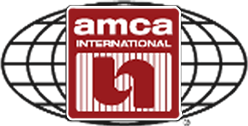
AMCA insite Webinar- U.S. Codes, Standards, & Regulations for Large Diameter Ceiling Fans.
The Impact of LDCF on COVID-19 Exposure in Warehouses
AMCA International, in collaboration with Concordia University and a
team of engineers and scientists, have published the results of a
year-long study that investigates the impact of LDCF on COVID-19
exposures in warehouses in the United States.
The findings are applicable to large open indoor spaces with low
occupancy, in addition to warehouses. They are based on over 220
parametric computational fluid dynamics (CFD) simulations. These
simulations varied worker and packing-line locations, fan speed (ranging
from 20% to 100%), and with and without racking. The fans used in the
project are certified by AMCA International for air performance.
AMCA
inmotion AMCA COVID-19 Guidance for Large-Diameter Ceiling Fans
Concordia
University AMCA Covid-19 Guidance for Large-Diameter Ceiling Fans
AMCA
Covid Guidance for UNDUCTED Fans- Modeling Ceiling Fans
Project Contributors
AMCA wishes to thank Liangzhu (Leon) Wang, PhD, P.Eng., and his team at Concordia University for
the modeling and the science and industry teams for their contributions
to the study design and the review of the results and guidance.
To promote integrity in the design and execution of the research and
ensure the conclusions drawn from the study are valid and useful, AMCA
International assembled industry and science teams. Consisting of
representatives of AMCA International member companies and members of
the AMCA International staff, the industry team provided expertise in
the application and performance of products, while the science team,
made up of authorities on infectious diseases, indoor-air quality, fans,
and computer modeling, advised on the project setup and reviewed the
intermediate and final results. The table below identifies the rosters
of the science and industry teams.
AMCA Member Companies
Thank you to the following AMCA member companies for co-funding this study:
Big Ass Fans
Greenheck Fan Corportation
Hunter Industrial
MacroAir Technologies
Science Team
Liangzhu Wang, PhD |
Associate professor, Department of Building, Civil, and Environmental Engineering |
Concordia University |
William P. Bahnfleth, PhD, PE, FASHRAE |
Professor, architectural engineering,
Chair, ASHRAE Epidemic Task Force |
The Pennsylvania State University |
Edward. Nardell, PhD |
Professor, departments of Environmental Health and Immunology and Infectious Diseases |
Harvard T. H. Chan School of Public Health |
Jovan Pantelic, PhD |
Research scientist, building science |
Well Living Lab Inc. |
Paul Raftery, PhD |
Professional researcher |
Center for the Built Environment University of California, Berkeley |
Geoffrey Sheard, PhD |
President |
AGS Consulting |
Pawel Wargocki, PhD |
Associate Professor, departments of Civil Engineering and Indoor Environment
Chair, ASHRAE Epidemic Task Force Science Applications Committee |
Technical University of Denmark |








